Since even before Day One, I've been a fan of Sony Computer Entertainment America's PlayStation Portable, or PSP. Leveraging the strengths and lessons learned from the original PlayStation and PlayStation 2, and creating a handheld device that would one day work well with the PlayStation 3, SCEA brought gamers a robust multimedia gadget that added movies, music and more, with a nifty user interface.
I can't claim vast experience with the PSP Go, a drastically redesigned follow-up to the original series of PSP models, although I heard that consumer response was largely tepid. But with the new PlayStation Vita, Sony has combined a multitude of strengths with some promising new features... and some vexing ones, too.
Ever since Nintendo introduced touchscreens on their handheld devices, I felt as though the substantially sized, beautiful sharp LCD on the PSP begged for that same type of interaction. I'm happy to report that the PS Vita screen is not only larger, and not only utilizes cutting-edge organic light-emitting diode (OLED) technology, but it does indeed offer multi-touch control. The breakthroughs don't end there, as this screen is joined by a multi-touch rear panel control pad on the flipside, as an additional input device for supported games. The PS Vita interface boasts fast, fluid launches and we can quickly learn the motions, peeling away one screen to reveal another beneath it, flicking between others. Welcome Park is a good place to start, as it happily guides us through various features for the first time including touch and tilt.
Dual analog sticks on either side extend significantly away from the console itself, for a superior feel under the thumbs and greater control, above SCEA's familiar D-pad and control buttons. The PS Vita includes both front- and rear-facing cameras, for simple still photo/video applications as well as in-game use, and a six-axis motion-sensing system: a three-axis gyroscope plus a three-axis accelerometer. There's also a three-axis electronic compass which--as I was reminded on a recent family trip--is a very handy doodad to have along.
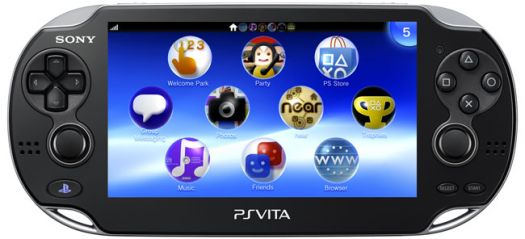
The hardware arrives with 512MB of RAM on board, which is enough to play most games but not enough to do much else. You'll definitely want to pick up a PlayStation Vita memory card, available in capacities of 4, 8, 16 or 32 GB. Our review sample came with a 16 GB card pre-installed -- 14 of which are at our disposal upon first use. We might be tempted to call this the successor to the Memory Stick PRO Duo card, except that the name of this little guy suggests some exclusivity with the handheld game console. This supplemental storage will surely be appreciated when we add content to the PS Vita, which can be accomplished in a number of ways.
Fill 'Er Up
The unit we tested offers both 802.11n high-speed Wi-Fi and 3G network connectivity, with service provided by AT&T. This in turn can link us to SCEA's dedicated PlayStation Network, with all of the content and community that PlayStation enthusiasts have come to expect over the past several years, as well as the PlayStation Store, from which we can purchase and immediately download games, add-ons, feature films and TV episodes. (We can share our current Store account with the Vita, or open a new one.) That sense of community is apparently more vital than ever, as seemingly every time I purchased anything I was asked if I wanted to let people know what I was up to. The size of game files varies, although some of the better titles can come in at a gigabyte or more. A two-hour movie is roughly one-and-a-half gigabytes. On the PlayStation 3 we are usually given HD (higher price, larger file) or SD movie options, but on the Vita only an SD choice appears, to buy or rent.
We can also connect to the PlayStation 3 console at home via the Vita's proprietary USB cable, and compatible content can theoretically be shared between the two pieces of hardware, as long as both are registered to the same user. The PS Vita offers different user interfaces including the icon-based "LiveArea" screen, and the virtual Content Manager button becomes a bit more animated when we're connected to the PS3. Transfer is handled via the Vita's controls, and compatible files are added to a list from which we can check off what we want, then click Copy.
The Vita is touted as being backward-compatible with the PlayStation Portable insofar as it can reportedly play PSP games and minis as well as videos purchased from the PlayStation Store. But while transferring my personal photos and MP3 songs from the PS3 hard drive to Vita's flash memory was quick and easy, only one of my stored PSP games (Little Big Planet) was recognized and made available for transfer. Worse, most of my videos were listed but some glitch noted them as having zero file size, and so not only couldn't I transfer any of them to Vita--not PSP copies that came with Blu-rays, not movie trailers and not my personal videos--but more often than not I was unceremoniously kicked out of Content Manager altogether.
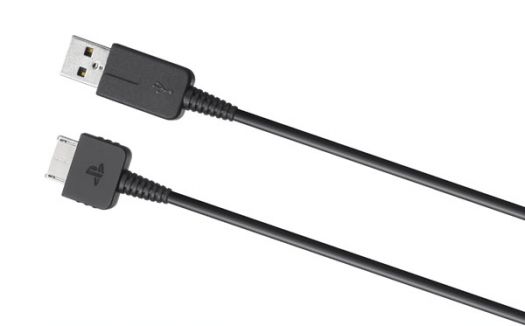
We can also connect to a PC via USB and drag and drop compatible non-DRM video and music files, and photos into the appropriate folders within the Vita's file system. But of course SCEA is in the gamin' business, supported by a host of capable third-party publishers, and quite a few titles were available at launch on the equally new PlayStation Vita card, a physical game medium which I suppose could be seen as a replacement for the much-maligned UMD optical disc. (What can I say, I liked UMD.) The Vita card and the Vita memory card are in fact two different formats: The game card is reminiscent of a standard SD card, with the memory card in between miniSD and microSD size.
Each of these cards parks in its own slot within the PS Vita console. The Vita chassis is somewhat longer and wider than the PSP-3000--the last upgrade to the PSP line--but ever so slightly thinner, exclusive of the protruding controls. The five-inch (measured diagonally) widescreen display once again dominates the face of the unit, which also contains two front-firing stereo speakers, as well as a microphone. I found the audio performance of the device itself to be rather disappointing, and had a much better experience when I switched to my go-to Creative Bluetooth headphones, which paired painlessly in the usual way.
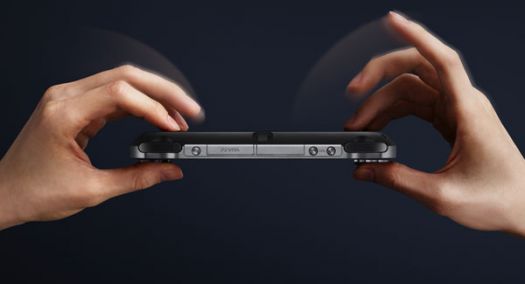
An "official" Vita headset might have its own microphone (and even a Mute switch) built in, as the Wi-Fi and 3G technologies allow chat features among the several newly added social wrinkles. LiveArea also accesses the latest game information and provides a constantly updated Activity log of accomplishments from gamers currently plugging away on the same title, while also triggering active real-time communication among users. The "near" feature allows users to find out what games other PS Vita users are playing in close proximity, crunching that data to also report which titles are the most popular. If we choose to share our personal information, we can virtually "meet" new people too. Other social uses include "Party," a communication app to text or voice-chat with other users while they're playing games, watching a movie, etc. Facebook for PS Vita is also available.
New Territory
Power-wise, this is a fairly awesome gaming machine, with separate quad-core computer and graphics processors. As a result, SCEA is able to give us Uncharted: Golden Abyss, the first portable iteration of their extremely successful Uncharted franchise. The game first needs to install on the device off of the game card (sold separately) and the gorgeous graphics soon reveal themselves with exquisite, stable animations even during the fast, smooth, dramatic camera moves. Shadows contain impressive details even in tricky, changing environments, while the nuances of the textures exceed what I thought was possible in a handheld device.
The controls do take some getting used to, likely because we've never controlled Drake quite like this. The dual-analog sticks allow us to move one way and pull the camera back in another, and we can juggle and use different weapons, climb, run, jump and fight all with the help of the touchscreen. The operation soon becomes so intuitive that we might find ourselves trying (in vain) to do the same stuff on the TV with the PS3 version, reaching out and touching the big glass.
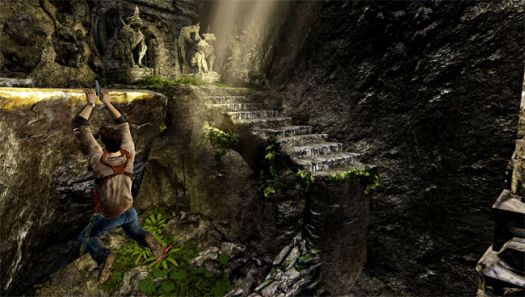
For years I've been amused at the sparseness of the instructions in the little included booklet with all games, but Golden Abyss offers none! This omission is even wilder in light of the brand-new control system, which this title excellently exploits. Thankfully there is a swell tutorial mode that walks us through the newfangled tricks. The mind reels at what we will be able to do once we master this new array of control enhancements. Meanwhile, the six-axis motion controls are a boon to aspiring pilots of the flying whatchamacall'ems in Wipeout 2048 as we navigate through virtual three-dimensional space. The backs of the little blue game boxes call out which of the many Vita features a given title can exploit.
UbiSoft's Michael Jackson: The Experience has the letters "HD" in the title, which is interesting considering the fact that the PS Vita is not an HD device. At 960x544-pixel resolution (220 pixels per inch), it qualifies as "qHD," one quarter of a full 1080p HD panel. This game is a lot of fun regardless, with some great music obviously, but it does remind me of a similar awkwardness I encountered while reviewing a handheld version of Guitar Hero several years ago: While making clever use of the multi-touch front screen and rear touchpad as well as the motion sensor, the Vita version of MJ challenges us in a different way from the home console edition, which requires us to actually get up and dance.
A handful of "AR" (Augmented Reality) game cards arrive with the PS Vita system, and these work in tandem with one or more of the free downloadable games such Cliff Diving, Fireworks and Table Soccer. When prompted in one of these li'l freebies, we give the PS Vita a good look at one of the cards via the outward facing camera and Vita will lay the game graphics over whatever environment it sees. A dude named Dan was high-diving into one of my sofa cushions for example, surrounded by all my personal clutter. It's a miracle he was ever seen again.
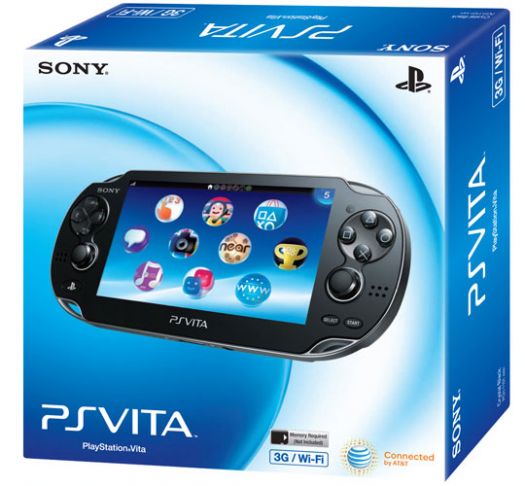
As a result of all of this combined gaming prowess, a new generation of cross-platform play is now possible, too. For the first time, we can start a game at home on the PS3, save our progress and then upload that data to The Cloud, then pull down the save file to PS Vita and continue that same game, but handheld. This is a terrific feature, but it will cost us, namely the price of both the PS3 and PS Vita versions of the same game. Specific prices will depend upon the game, but for MLB: The Show Sony has arranged a limited-time promotion for a $20 discount when the PS3 and PS Vita versions are purchased together.
Remote Access, Local Storage
The PS Vita is also quite a capable audio/video player. When linked wirelessly to the PS3 (which has to be powered on and properly configured) for Remote Play, we can access the contents of the PS3's hard drive over the internet, organized in the well-established XrossMedia Bar layout. (I really felt like we should be able to use the Vita touchscreen to navigate the XMB directly, but we can't.) Interestingly, an inserted Blu-ray and all of my PSP Digital Copy movies disappear from the list of my available content during Remote Play, but 1080p and 720p trailers and assorted personal videos reproduced with wonderful crispness and color on the five-inch OLED screen. But owing to the limitations of the hardware, or the data connection, or a bit of both, the occasional video freezes in playback or the control freezes when playing a game are serious enough to be extremely annoying.
The so-called SD video rentals and purchases from the PlayStation Store show an extraordinary range of colors and a striking level of fine detail, right down to the different textures of actors' skin. Even if this isn't true HD, it's clear enough that we can tell the quality difference between what was created in SD (older TV content for example) and what is being downconverted from an HD master. In short, the better the original production quality, the better a video will likely look here. A custom version of the Netflix movie/TV-streaming app is also available for PS Vita.
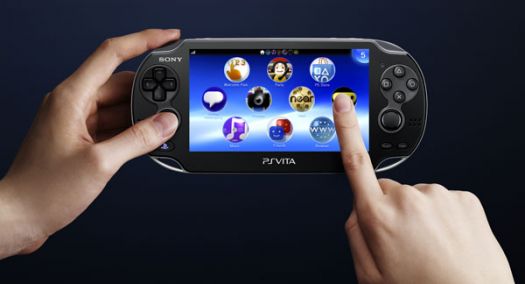
Web browsing is quick and text/photos look great in qHD, although sadly, Adobe Flash video is not supported, and neither is HTML5 (yet), so forget about sites like YouTube and get used to a lot of empty rectangles in the middle of web pages. Musically, we can load up an assortment of audio tracks from our current collection, and we are also encouraged to download Sony's Music Unlimited app for a premium streaming service with millions upon millions of big-name tracks, beginning with a free trial.
Turn-Ons:
Turn-Offs:
The 3G model that we tested exploited AT&T's data network with a speed and dependability comparable to what I'm used to from my iPhone. But in addition to a $50 hardware premium right off the bat versus the $250 non-3G model, the accompanying service adds a not-insignificant $14.99 for a monthly (no contract) 250MB data plan, or $30 for 3GB. In exchange we can have some internet access for those times when Wi-Fi is not an option, so apply these pros and cons to your own needs and experiences. Wi-Fi is often free and usually faster, but stepping up to the 3G version does liberate us somewhat.
Remarkably, I was able to do the lion's share of my arduous testing for this story off of just my initial top-off of the rechargeable, non-removable lithium battery. I tended to leave the unit on rather than power it down altogether, so the automatic Standby mode must be extremely frugal.
Final Thoughts/Conclusion:
With nimble operation and an attractive, graphics-driven interface, the versatile PS Vita pulls together the high-quality gaming, movies, music and more that we should expect from a modern multimedia device. A clear emphasis has been put on the games, with performance and an early variety that doesn't disappoint, but the movie/TV fare from a variety of studios and sources is a big selling point as well. The limited interactivity with my SCEA-branded media hub, the PS3, is undeniably frustrating however, as is the inability to view web video, so let's hope that future firmware updates address these compromises to an otherwise impressive new platform.
Where to Buy:
Also Available:
Manufacturer's Specifications and Features:
What's in the Box?
Manufacturer's Contact Information:
Sony Computer Entertainment America
919 East Hillsdale Boulevard
2nd Floor
Foster City, CA 94404
ph: 800-345-SONY
Website: http://us.playstation.com/psvita
| Overall | |
|---|---|
| Value | |
| Performance | |
| Features/Ergonomics |